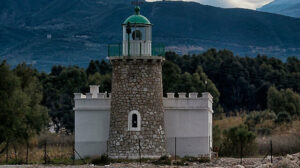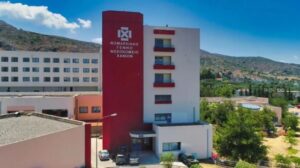The name of Lars Rasmussen, international IT guru, one of the co-founders in the more distant past of the platform that evolved into the most popular digital maps such as Google maps, but also an investor today in innovative companies, including Greek ones, has been heard particularly in recent days as an interested party for further investments, but this time in another investment field, such as that of Greek tourism.
The reason for this was the noise that has already emerged since the autumn of 2023 and more intensely in the last two months regarding the Lighthouse in Drepano, Achaia. This is a property, classified as a historical monument by the Ministry of Culture, protected by the provisions of the archaeological law, with the additional restrictions that accompany the faro buildings.
Now, investment funds linked to the Danish software developer, who, 20 years ago, was one of the co-creators of the digital mapping/navigation platform bought by Google in 2004, have reportedly expressed interest in developing the area around the lighthouse, also targeting digital nomads working remotely in the technology sector. The rumour has not been confirmed. Mr Rasmussen himself, having already made individual investments in innovative Greek companies (and in Patras), with a particular interest in Greece anyway, where he is staying more permanently from 2020, has repeatedly expressed the view that our country can become a European innovation center. It is precisely in this context that Greece could attract a larger number of digital nomads in the near future, creating an “ecosystem” of relevant experiences.
In relation to the Lighthouse in Drepano, Achaia, last autumn, the Hellenic Navy General Staff (HNGS) had rejected, following a negative recommendation of the Lighthouse Service, a request from investors, as it was known at the time, to create a luxury guesthouse in the wider area, including adjacent properties. It should be noted that the area is ideal for the Olympic sport of kite surfing due to the particularly favorable winds that blow there.
The issue flared up again at the end of last May after the passing of a bill by the Ministry of National Defence in Parliament on the “Establishment of a Greek Center for Defence Innovation, modernisation of the institutional framework of the Higher Military Educational Institutions, establishment of a Joint Information Technology Body in the Armed Forces and other provisions”, which included, among other things, in Article 66, an amendment to the lighthouse underwriting system.
According to this, “natural or legal persons may undertake without remuneration the obligation to carry out work or to cover the costs of installation, maintenance, repair or promotion of one or more lighthouses for a certain period of time, as follows: a) by means of a call for expressions of interest issued for the above purpose by the Lighthouse Service (LS), or b) by means of an application submitted to the LS, for the purpose of promoting Olympic sports, in particular through the organization of sporting events or the provision of hospitality and operational services to athletes, clubs and sports federations. The above mentioned persons are declared Lighthouse Contractors by decision of the Hellenic Navy General Staff (HNGS) and acquire the right to use the lighthouse and their communication promotion. The Lighthouse Contractor is obliged to respect the historical, architectural and cultural value of the lighthouse and to comply with the legislation for the protection and preservation of national defence and security. The HNGS shall supervise the works”.
Now, the Patras Municipal Authority is attempting to put the brakes on the possibility of a concession to a private party, referring to a relevant method and proceeding to issue a relevant resolution last week, based on this rationale: The city council of Patras adopted a resolution for the return to the Municipality of Patras of the area of the Lighthouse with the purpose and creation of a free seaside park, which will also serve the nautical activities, accessible to all. On the other hand, however, there is also criticism in the opposite direction, namely that in the area, which has been seeking to stimulate tourism in recent years, an investment plan can coexist with the direction of tourism development and will also respect the special characteristics, such as those of a historical monument.
Ask me anything
Explore related questions





